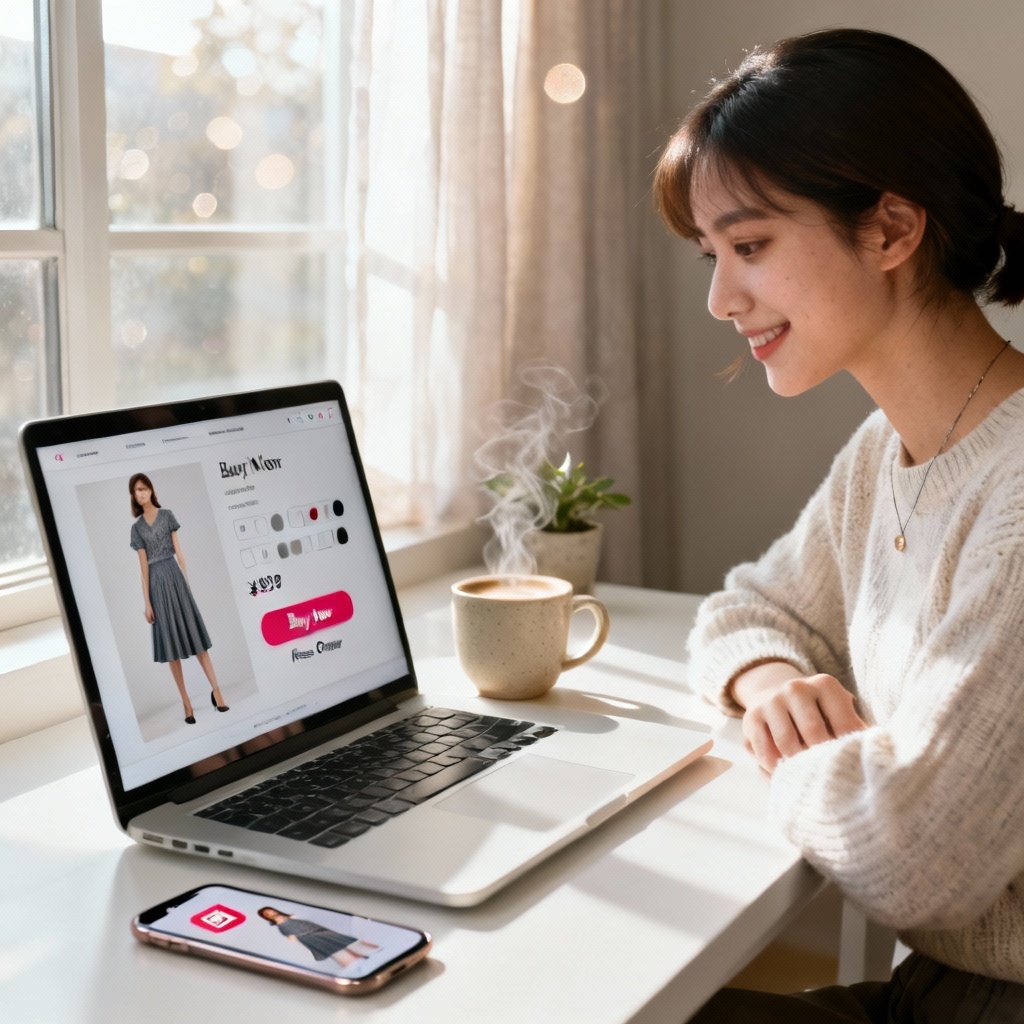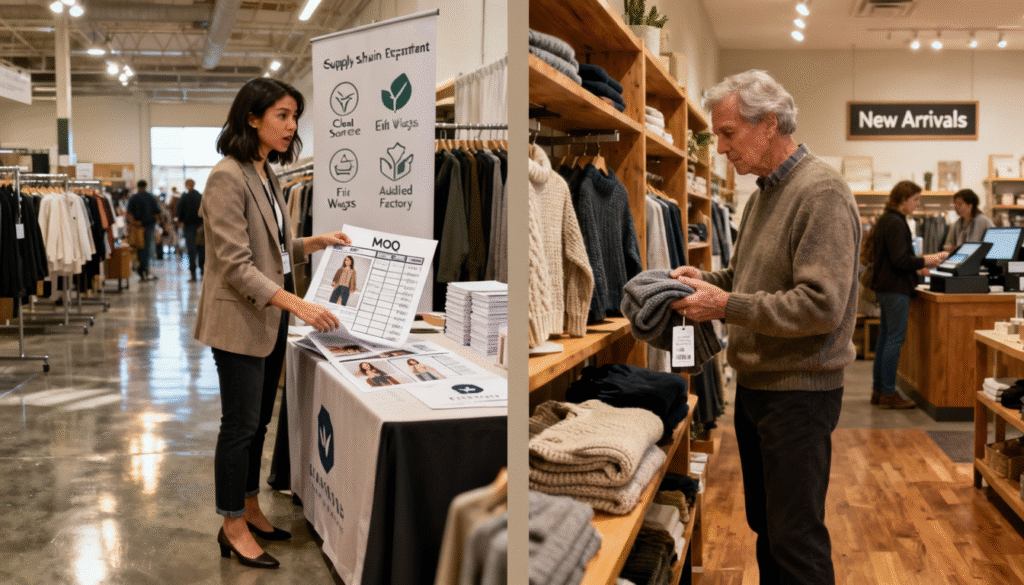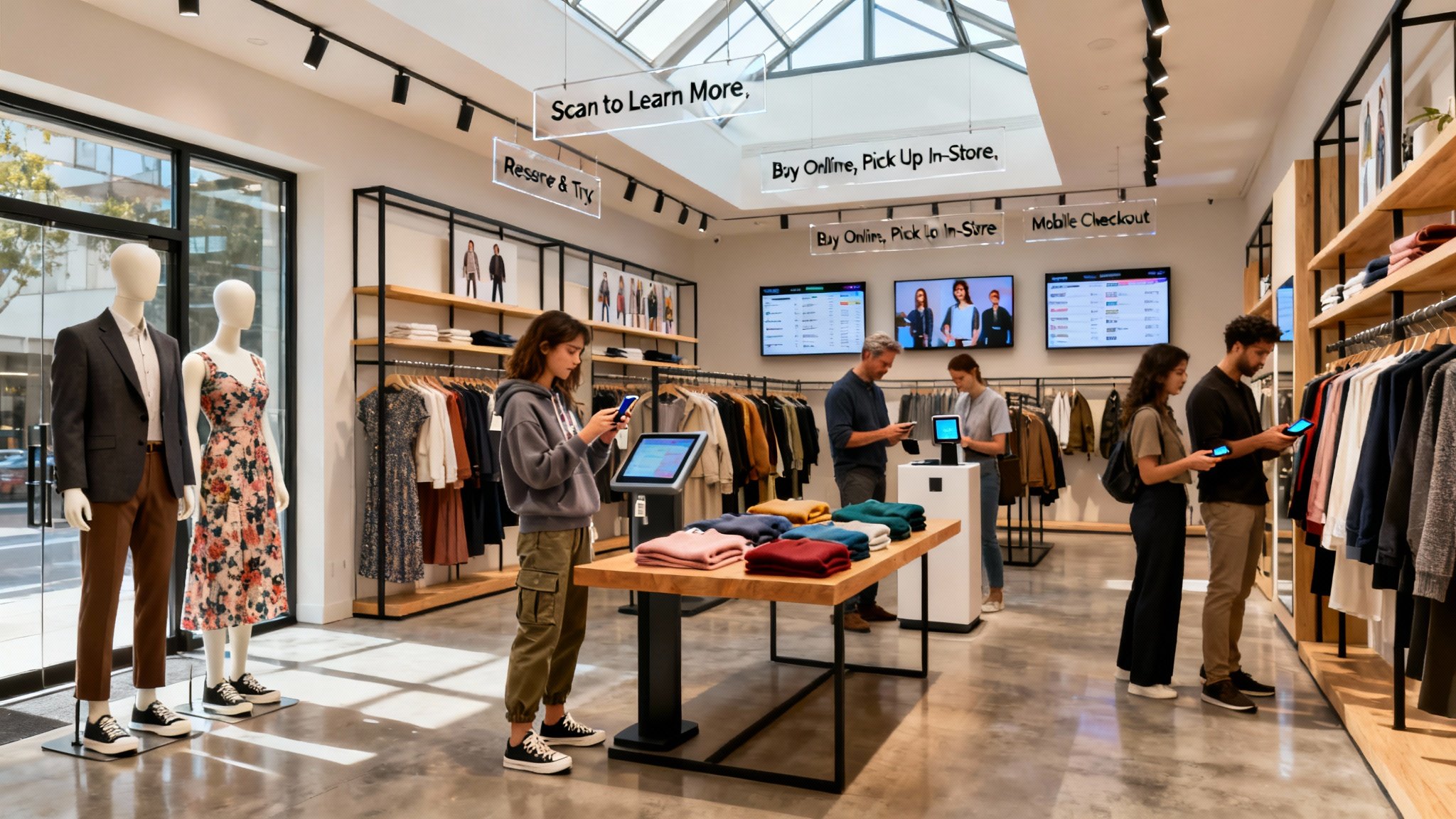Fashion Insight 2025: What’s Really Changing in the Global Fashion Industry (And How To Win Without Burning Out)
Actionable fashion insight for 2025—consumer shifts, AI, sustainability, and regional growth, written with data, stories, and a human pulse.
I’ve worked in and around fashion long enough to know when we’re just rearranging buzzwords. This isn’t that. The ground is actually moving. If you need clear, honest fashion insight you can use on Monday morning—not a 50-slide deck full of arrows—pull up a chair. We’ll cover what’s really changing (consumers, channels, tech, regulation), what’s hype, and simple ways to adapt without turning your team into a 24/7 crisis unit.
And yes, we’ll keep this readable. Think coffee chat, not conference panel.
What “Fashion Insight” Really Means Right Now
Good fashion insight isn’t a trend list; it’s a map. It tells you what’s moving, where to place your bets, and which instincts to ignore—because the rules that worked in 2019 won’t carry you through 2025.
A few baselines:
- Consumers are still price-sensitive after two inflation-heavy years, with value driving behavior across segments.
- Growth is slower but not collapsing; non-luxury is doing the heavy lifting in the recent years.
- AI and data are shifting from “innovation lab” to line-item necessity.
- Regulation isn’t a press release anymore—it’s real, with deadlines and penalties.
McKinsey’s State of Fashion 2025 sums it up cleanly: expect low single-digit growth, rising price sensitivity, and sharper regional differences, alongside AI stepping into core operations and an industry-wide push to clarify what “value” means for each brand tier McKinsey overview, State of Fashion hub, and a useful third-party recap via Fashion Dive Fashion Dive.
I’ll weave in more of that research where it helps (promise: no footnote energy).
The Market Reset (And Why It’s Not A Disaster)
If you’re waiting for the big “post-pandemic rebound,” stop. The rebound was 2021–22. Now we’re in what I’d call the steady stretch in fashion: low single-digit growth, fewer easy wins, and way more pressure to get the basics right. McKinsey projects sluggish-but-stable expansion, with non-luxury leading profit creation for the first time in years McKinsey, Fashion Dive.
What’s different this time:
- Price sensitivity isn’t just a “lower-income” story. Even affluent shoppers are more value-aware—discounting, dupes, and off-price are normal, not taboo.
- Luxury trends isn’t collapsing, but it’s not carrying the sector like it did in 2021–22. The baton passes to non-luxury for now.
- Geographic splits are sharper. A playbook that works in Tokyo may fall flat in Toronto.
I was in a merchant review where a VP said, “We can’t keep assuming the $800 jacket will float on vibe alone this fall.” He wasn’t being dramatic; he was reading the receipts.
Friendly reminder: a steady market rewards operational discipline and brand clarity. That’s not sexy. It is profitable.
E‑Commerce Matures: Growth Shifts From “More” To “Better”

Yes, e‑com is still growing. No, it’s not the rocket ship it was. The tailwinds are gone; what’s left is craft—lifecycle marketing, retention, post-purchase care, returns logic, and mobile performance. McKinsey’s 2025 outlook calls out existential challenges for some digital-first platforms and warns that everyone needs a clearer reason to exist online—not merely to exist McKinsey, Fashion Dive.
A store lead told me last month, “We see TikTok traffic spike after 10 p.m.—it’s wild, but it only converts if the size grid is clean and the return process is painless.” Translation: the last-mile details are the business.
Quick fashion insight for e‑com teams:
- Mobile speed and size availability drive more incremental revenue than a “new” homepage layout.
- Customers will forgive out-of-stock once. Twice becomes “this brand never has my size.”
- Social commerce isn’t a toy. It’s impulse-friendly retail that needs inventory and CX guardrails.
Physical Retail’s Comeback (And Why It’s Not 2015 All Over Again)
Stores are back—but they’re different. Not racks, but reasons. I walked into Nike SoHo in the fall and spent 20 minutes watching a real pickup game on their in-store court. People came for the moment; the shopping was a byproduct.
Good stores now do three things to stay ahead in the fashion industry:
- Give consumers something to do, not just to buy.
- Connect digital and physical without making you open three apps.
- Offer competent human help at decision pinch points (fit, styling, pickup, returns).
If you want a short list to sanity-check a new store concept, try this:
- Can a customer accomplish something specific here they can’t do online?
- Does the staff have quick access to order history and fit feedback?
- Is the space a destination, or just an inventory closet with speakers?
If the answer to that last one is “closet,” your shopper will notice. Quickly.
Who’s Really Buying: Gen Z, The Silver Generation, And The “Access” Habit

The clearest fashion insight I’ve had this year came from two conversations that had nothing in common—at least on paper.
First, a 23-year-old buyer at market flipped through a line sheet and said, “If I can’t tell how you treat people, I’m out.” Not whispered. Said. Out loud. Then she bought from a brand with a one-page transparency brief that looked like it was made in Google Docs. I loved her immediately.
Later that week, a 62-year-old customer in a suburban store told an associate, “I’ll pay more if it doesn’t pill in a month.” He wasn’t posturing. He was tired of replacing sweaters.
Two shoppers, same energy: prove the value. For Gen Z, that includes ethics and planet; for older buyers, durability and comfort show up higher. Both groups are decisive when trust clicks.
A few things worth noting on consumer behavior:
- Gen Z’s research habit is real. They check supply chains of what they’re wearing, look for proof (certifications, not green vibes), and listen to micro-influencers more than celebrities.
- The “Silver Generation” controls a huge slice of wealth in mature markets; McKinsey highlights them as a growth lever in 2025 planning Fashion Dive. They’re not anti-fashion; they’re anti-fuss.
- Access beats ownership in more categories than you think. Rental and resale aren’t fringe anymore; they’re how many shoppers manage novelty without drowning in stuff.
If you’re building assortments, it’s less about age segmentation and more about trust segmentation: which signals make this customer believe you?
How People Shop Now (Shorter Trips, More Often)
One habit of consumer behavior I can’t unsee: smaller baskets, higher frequency. Not “big fall shop,” but “two things on Tuesday,” and then a return on Friday because the fit was off (we’ll fix that in a second).
What this means for the fashion business:
- You’ll win on friction, not flash. Easy buy flows. Clear sizing. Thoughtful returns.
- Seasonality looks different. The calendar still matters for storytelling, but customers want relevance year-round, not “wait until March.”
- Social-to-checkout is real, but it’s not universal. Categories with fit complexity need stronger try-on options and fit education to capture late-night scroll buys.
A store manager told me, “The try-on room is still our closer.” Online needs its version of that—and yes, virtual try-on is getting better every quarter since last year.
Technology That’s Actually Useful (Not A Lab Toy)
Let’s talk AI without the spaceship soundtrack. In 2025, AI sits in three practical places that affects consumer spending:
- Demand forecasting and inventory optimization
- Product discovery and merchandising
- Customer support and personalization
McKinsey’s latest pulse notes that 75% of executives are prioritizing AI for inventory and cost control, and nearly half see AI-driven marketing as a big value driver this year McKinsey webinar summary.
In plain English: better buys, fewer stockouts, fewer 60%-off “surprises.”
Two more tech notes that matter:
- Virtual try-on keeps chipping away at returns. It’s not perfect, but when it’s sized right, the win is immediate: fewer WISMR (“what I saw vs. me, reality”) moments.
- 3D design tools aren’t just sustainable; they’re faster. One studio walked me through a 48-hour loop that used to take weeks. Samples still matter, but you can kill bad ideas earlier.
Small caveat (I promised honesty): personalization can tip into creepy. Stay on the customer’s side. Helpful: “You bought the black tee in May—here’s the same cut in merino.” Creepy: “We noticed you lingered for 19 seconds on a puffer; here are five in your size.”
When “Fashion Insight” Meets Policy: Sustainability With Teeth
If your sustainability plan lives in your fashion brand book, 2025 will be…educational. Regulation is the headline, not the postscript. The EU’s Digital Product Passport (DPP) requirements begin rolling through categories starting in 2025 and push for traceability at the product level—materials, processes, care, durability. The exact timelines and category rollouts vary by country and program, but the direction is set: more disclosure, with penalties for missing the brief. McKinsey flags the regulatory drumbeat and notes most brands are behind on decarbonization goals—a gap that won’t magically close itself McKinsey overview, Fashion Dive.
Two practical moves I’ve seen work in the fashion industry:
- Treat data like fabric. Build bill-of-materials visibility now, not in Q4 when someone asks for a DPP field you can’t populate.
- Pick one circularity lane you can execute cleanly (repairs, take-back, resale) and do it consistently. You don’t need the whole Swiss Army knife on day one.
I’m not saying it’s cheap. I am saying it’s cheaper than “non-compliance plus scrambled retrofit.”
Regional Fashion Insight: Where The Growth Hides
If your growth plan says “US and Western Europe, but bigger,” you’re missing the plot. The next two years reward pattern-matching across regions without pretending they’re interchangeable.
- Asia-Pacific: Rising middle classes and vibrant digital ecosystems make India, Vietnam, and Thailand look particularly interesting in 2025 planning. The story in China is more mixed; brands are diversifying into Japan and Korea as well McKinsey.
- North America: Luxury gravity sits in major coastal cities; value-led growth shows up strongly in suburbs and smaller metros. One size fits…no one.
- Europe: Fragmented and fussy (in a good way). Local nuance wins. A denim story that lands in Italy may need a comfort-fit variation in Germany. Regional merchandising isn’t optional anymore.
- Middle East: Fast growth and a young demographic. Modest fashion keeps expanding—respect the category’s design logic and you’ll find a loyal customer.
- Latin America: E‑com penetration is up, but trust still leans local. Partnerships and localized ops beat copy-paste expansion.
- Africa: Creativity crosses borders faster than distribution. Watch Lagos and Cape Town for trend influence and designer collaborations. Even if you don’t sell there yet, you’ll feel the design ripple.
Small exception worth noting: while micro-influencers drive results in many markets, I’ve seen K-pop-led mega-influence outperform micro plays in Korea for specific sneaker and beauty-adjacent drops. Test locally; assume nothing.
DTC, Wholesale, Marketplaces: Choose Your Headaches
Every channel mix is a trade. DTC gives you data and margin control—until logistics and service costs chew them up. Wholesale grants reach and predictability—until doors change their open-to-buy or demand more co-op marketing. Marketplaces drive volume—until discovery fees and returns blow up your P&L.
A simple fashion insight lens I use:
- DTC is best when you have repeat purchase and clear fit/size predictability.
- Wholesale shines in the fashion industry when you need trust (category entry) and physical try-on.
- Marketplaces help you move breadth and capture long-tail demand—if you manage assortment discipline.
One caution: a lot of brands “launch” DTC and then underfund support and operations. That’s not DTC—that’s a cart with hopes and dreams.
Inside The Org: Skills And Teams For 2025
I used to think the biggest gap was “creative vs. commercial.” Now it’s “data fluent vs. data allergic.” The best merchandisers I know sit with analysts weekly and use insights like tools, not trophies. The best marketers treat testing like brushing their teeth—automatic, daily, painless.
If you’re hiring or upskilling to stay ahead, I’d prioritize:
- Merchandisers who can read cohort behavior and balance buys against size curve realities.
- CX leaders who see returns as a learning system, not a cost to hide.
- Designers open to 3D workflows and sampling discipline.
- Retail ops folks who can connect store events to CRM logic.
- A humble, high-signal analytics partner (internal or external) who translates data for humans.
And one cultural shift: make it normal to change your mind when the evidence changes. I typed 2026 in a deck last month and then wrote (nope, meant 2025) right after it on purpose. A small thing—but everyone breathed a little easier. Humans make better decisions when it’s okay to be human.
Pricing, Value, And The “Good, Better, Best” Reality
Shoppers are not allergic to paying more. They’re allergic to paying more without a reason. Your job is to make the reason obvious. That’s data science.
Useful ways to signal value without racing to the bottom:
- Materials you can feel (hand-feel matters, even on a product page—use micro-video).
- Care instructions that don’t require a lab.
- Fit clarity (one model, two sizes, quick compare).
- Simple perks that respect time: fast pickup, smart exchanges, easy tailoring.
And because someone will ask—yes, subscriptions and membership perks can work; no, they’re not for every brand (not even Ralph Lauren). Where I’ve seen them succeed: replenishment basics, kid categories (growth is real), and micro-luxuries where surprise-and-delight lands well.
Evidence Without The Vibe Kill
You’ll notice I’m citing sources in passing rather than slamming you with studies. Here are a few I referenced or found most useful as you shape your own fashion insight:
- McKinsey’s State of Fashion 2025 (executive priorities, regional splits, AI use cases) McKinsey hub.
- Companion live summary on 2025 trends and AI adoption in core functions McKinsey webinar.
- Fashion Dive’s digestible recap of growth expectations and segment shifts Fashion Dive.
Use them to sanity-check your own data. If your numbers disagree, trust your numbers—and then figure out why.
A Few Live Moments From The Floor
Because pure analysis can feel like drywall, here are three quick snapshots that shaped my head this year:
- “We don’t need a bigger budget; we need fewer SKUs.” A planner said this in a meeting and the room went quiet. Two months later, on-time deliveries improved and margin ticked up. We love to add. We forget subtraction is a strategy even in the fashion industry.
- A stylist in a mid-size city showed me a rolling rack: “These are the ‘third pieces’ that fix 80% of try-on room panic.” She meant light layers that rescue the almost-there outfit. Turns out, those also rescue conversion of consumers.
- Late-night social purchase: 11:08 p.m., I tapped “view more” on a jacket, forgot about it, and it arrived two days later. When I DM’d the brand about the fit, a human replied (or a very good human-sounding bot). Either way, I felt heard and kept the jacket.
And that’s the real thread in useful fashion insight: patterns are data; moments make them stick.
Your 90‑Day Plan (Keep It Simple)
You don’t need a revolution. You need a list.
Weeks 1–3
- Audit mobile speed, size availability, and return friction. Fix the worst 3 UX blockers.
- Pick one underperforming category. Rebuild the size curve against returns and reviews.
- Confirm your DPP/traceability data gaps; assign owners and deadlines.
Weeks 4–6
- Launch one live fit-support test (video try-on, fit quiz tuned to your cuts, or “ask a stylist” chat with working hours).
- Kill 10 SKUs that consume attention and don’t pay rent.
- Plan one in-store moment that’s an actual reason to visit (mini clinic, customizations, local collab).
Weeks 7–10
- Set up weekly demand forecast reviews with your analytics partner; adjust buys incrementally.
- Pilot a micro-influencer test with 5 creators who actually use the product; measure saves and comments, not just clicks.
Weeks 11–13
- Publish a simple “how we make this” page for a core product. Not a manifesto—three photos, five facts, one care tip.
- Measure what moved: fewer returns? Faster sell-through? More pickup? Keep what works; kill what didn’t.
This plan is boring in the best way. Boring is repeatable. Repeatable is scale.
The Human Part (A Short Note I Wish Someone Had Told Me Earlier)
It’s tempting to chase every “new” thing. Most of your wins this year will come from getting the old things right—with a few well-placed new things layered on top. You don’t have to do everything. You just have to do what matters for your shopper, and then do it again.
Also, it’s okay to write “I don’t know yet” in a margin. I did that on a wholesale forecast last quarter and then added: “Ask stores. They’ll know by Friday.” They did.
Fashion Insight: The One-Page Summary
- The market is steady, not soft; non-luxury leads profit growth [McKinsey, Fashion Dive].
- Value is the throughline across ages; prove it with quality, clarity, and service.
- E‑com wins on friction reduction; stores win on reasons to visit.
- AI is practical now—use it for forecasting, discovery, and support, but keep it human.
- Regulation isn’t future-tense; get traceability in order and pick one circularity move you can sustain.
- Growth is regional and nuanced; localize honestly.
- Channel strategy is choosing your trade-offs, not avoiding them.
- Teams that blend taste and data will lap the field.
If you only remember one thing, make it this: fashion insight isn’t about predicting a color; it’s about knowing your customer well enough to make good bets before the season—and better corrections during it. I guarantee you this will create an impact among your fashion consumers.
Conclusion: The Future’s Not Flashy—It’s Focused
The best fashion insight in 2025 is surprisingly simple: clarity beats noise. Know who you serve. Prove your value in the fashion industry above popularity because the latter will come eventually. Remove the frictions that make good customers quit. Use AI and data like tools, not mascots. Respect regional nuance. Build one sustainable habit at a time. And give people a reason to show up—online or in person—that goes beyond a discount.
When in doubt, ask the person closest to the customer. A store associate once told me, “People come in for jeans; they leave feeling put together.” That’s the job. Whatever the channel, whatever the trend cycle, help people leave feeling put together. The revenue tends to follow.
If you’re after fashion insight you can act on this week, start small, measure fast, and let your best moves snowball. It’s not glamorous, but it works in the fashion industry—and it’s way more fun than living in a spreadsheet panic for twelve months.
And if I wrote “2026” somewhere above and then corrected it to “2025”—yes, I caught that too. We’re all learning in public. That’s kind of the point.
References used naturally in the piece:
- McKinsey’s State of Fashion 2025 hub and outlook on AI priorities and regional dynamics: McKinsey, Industry flux overview, AI use cases webinar summary.
- Digestible recap with segment performance insights: Fashion Dive.








One Comment
Comments are closed.